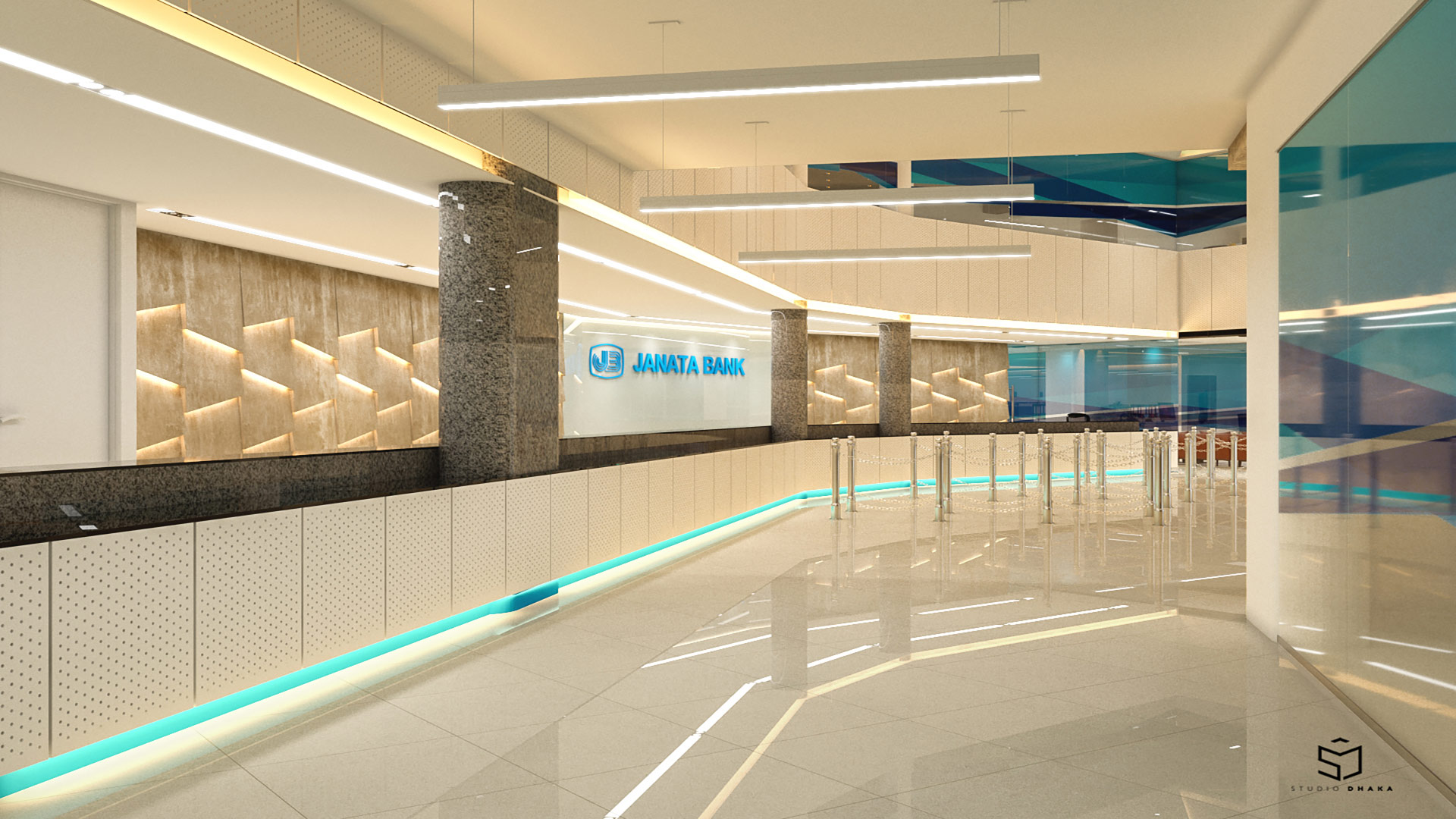Janata Bank Ltd. Branch Interior Design Project
DescriptionInterior design plays a crucial role in shaping the environment of a Bank. It must balance functionality, security, and aesthetics to create a space that is both efficient and welcoming. This article will explore key aspects of designing such a space, from layout and furniture to color schemes and lighting.
1. Layout and Space Planning
Efficiency and Flow:
A bank's layout should prioritize efficient customer flow. Clearly defined areas for different functions—such as teller stations, loan offices, and customer service desks—help minimize congestion and improve service speed. The placement of these areas should consider customer privacy and security, ensuring sensitive transactions are conducted in discreet locations.
Accessibility:
Accessibility is paramount. The design should comply with ADA (Americans with Disabilities Act) standards, including ramps, wide corridors, and accessible counters. This not only ensures compliance with regulations but also promotes inclusivity.
2. Furniture and Fixtures
Durability and Comfort:
Bank furniture should be durable to withstand heavy use. Materials like high-quality wood, metal, and stain-resistant fabrics are ideal. Comfort is also essential, particularly in waiting areas. Ergonomically designed chairs and sofas enhance the customer experience, making wait times more pleasant.
Functionality:
Workstations for bank staff should be ergonomic and functional, equipped with ample storage and space for computers and other equipment. Adjustable chairs, appropriate lighting, and organized layouts contribute to employee productivity and satisfaction.
3. Color Scheme and Branding
Professional and Inviting:
The color scheme of a bank should reflect professionalism while being inviting. Neutral colors like beige, gray, and white convey trust and stability. Accent colors, aligned with the bank’s branding, can add warmth and visual interest. For instance, shades of blue often evoke feelings of trust and security, which are crucial in a banking environment.
Brand Consistency:
Incorporating the bank’s branding into the interior design reinforces brand identity. This can be achieved through the use of the bank’s colors, logo placement, and branded materials. Consistency in branding helps build customer trust and recognition.
4. Lighting
Natural Light:
Maximizing natural light not only reduces energy costs but also creates a more pleasant and inviting atmosphere. Large windows and skylights can be incorporated where security allows. Natural light improves mood and reduces eye strain for both customers and employees.
Artificial Lighting:
Artificial lighting should be carefully planned to ensure all areas are well-lit without causing glare. LED lighting is energy-efficient and can be adjusted in terms of brightness and color temperature. Task lighting at workstations and soft, ambient lighting in customer areas create a balanced environment.
5. Security Considerations
Discreet Security Features:
Security is a top priority in bank design. However, security features should be integrated discreetly to avoid creating an intimidating atmosphere. This includes the strategic placement of cameras, alarm systems, and secure access points.
Safe and Secure Environment:
The design should include secure areas for cash handling and storage, with restricted access to authorized personnel only. Teller counters should be designed with security glass and panic buttons, ensuring staff safety without compromising on customer service.
Location:
Dhaka, Bangladesh
Area:
-
Area Size
Principal Architect:
-
Architect Name
Project Architect:
-
Architect Name




